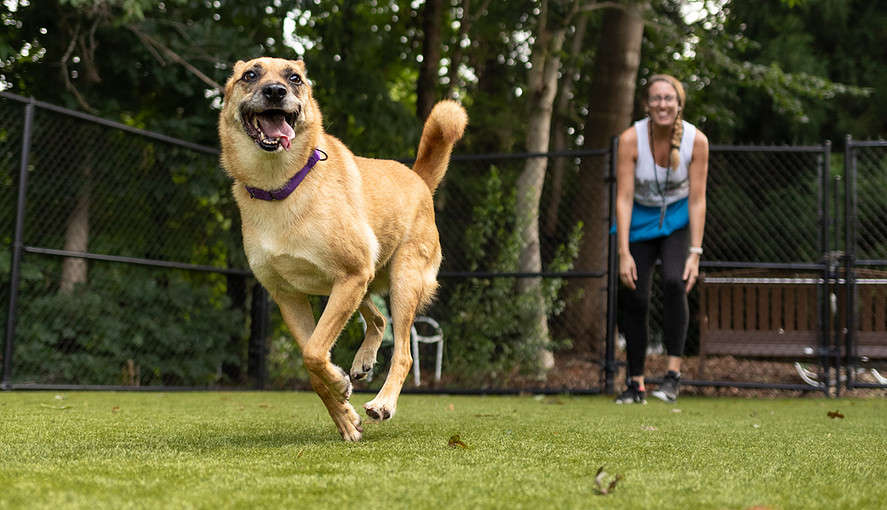Share this Post
Raleigh-area animal shelters are bursting at the seams.
“There’s no downtime and no relief. We’ve already done four [adoption] pleas in the first six months of this year,” says Meagan Thomas, community outreach manager at Wake County Animal Center. “That’s not normal. We need help.”
Clearly. In early August, WCAC received an influx of 208 dogs and cats over the course of seven days, generating the most desperate plea for adoption yet. If not for the immediate overwhelming response from the public—read: 41 feline and 39 canine adoptions, NTM transfers and owner reclaims—the shelter would have been forced to euthanize for space for the first time in over seven years. And while the heartwarming reply to save these animals’ lives is certainly a win, there’s no way around it: When shelters are too full, animals die—and the overarching problem still persists.
Prior to 2020, animal intake had been trending downward—but, since, those numbers, along with pet population, are on the rise countrywide. According to Thomas, high housing costs and financial ability are part of the problem, plus strict rules on pet ownership for many renters—whether that’s no pets or breed/size restrictions.
When shelters overflow, quality of life is compromised. Beyond animal morale, squeezing pups in tighter spaces also leads to more disease and barking, and an overwhelming experience for visitors and volunteers alike, says Thomas—because chaos.
Exacerbating the situation, WCAC is currently the only open intake organization in the county—making the center the go-to hub for all owner-surrendered pets, stray pets or animal welfare/cruelty
cases countywide.
“Every stray animal, every owner surrender, every hoarding case, every cruelty/neglect case or dog-fighting operation, they’re all coming to us,” elaborates Thomas. “In many ways it’s a good thing—it gives owners one place to look for a lost pet. But our organization also can’t turn away animals.”
And just because a shelter is classified as “no-kill” doesn’t mean they never euthanize. Any org (open or closed intake) with a euthanasia rate of 9.9% or less qualifies for a no-kill designation; however, many no-kill shelters are still forced to euthanize for space, medical or behavioral reasons.
“If we reach out to our foster base and our animal rescue partners and they tell us ‘No, we’re not taking them,’ there’s only so long we can hang on to them before we have to make room for other animals coming in,” says Thomas. “It’s not humane to keep them in a kennel when they’re spinning in circles and self-mutilating. We’re not in the business of keeping animals alive just for the sake of saying they’re alive.”
Not only does overcrowding take a toll on the animals, but on staff and volunteers as well, maintains Thomas. “We’re all here because we love animals—and it’s really hard when this has been the reality for the past two years without any sort of letting up,” she adds. … So, cat/canine lovers of Raleigh, if you’re looking to add a furry friend to your family, perhaps adopt before shop? You could be saving a four-legged life. pets.wake.gov
Share this Post








